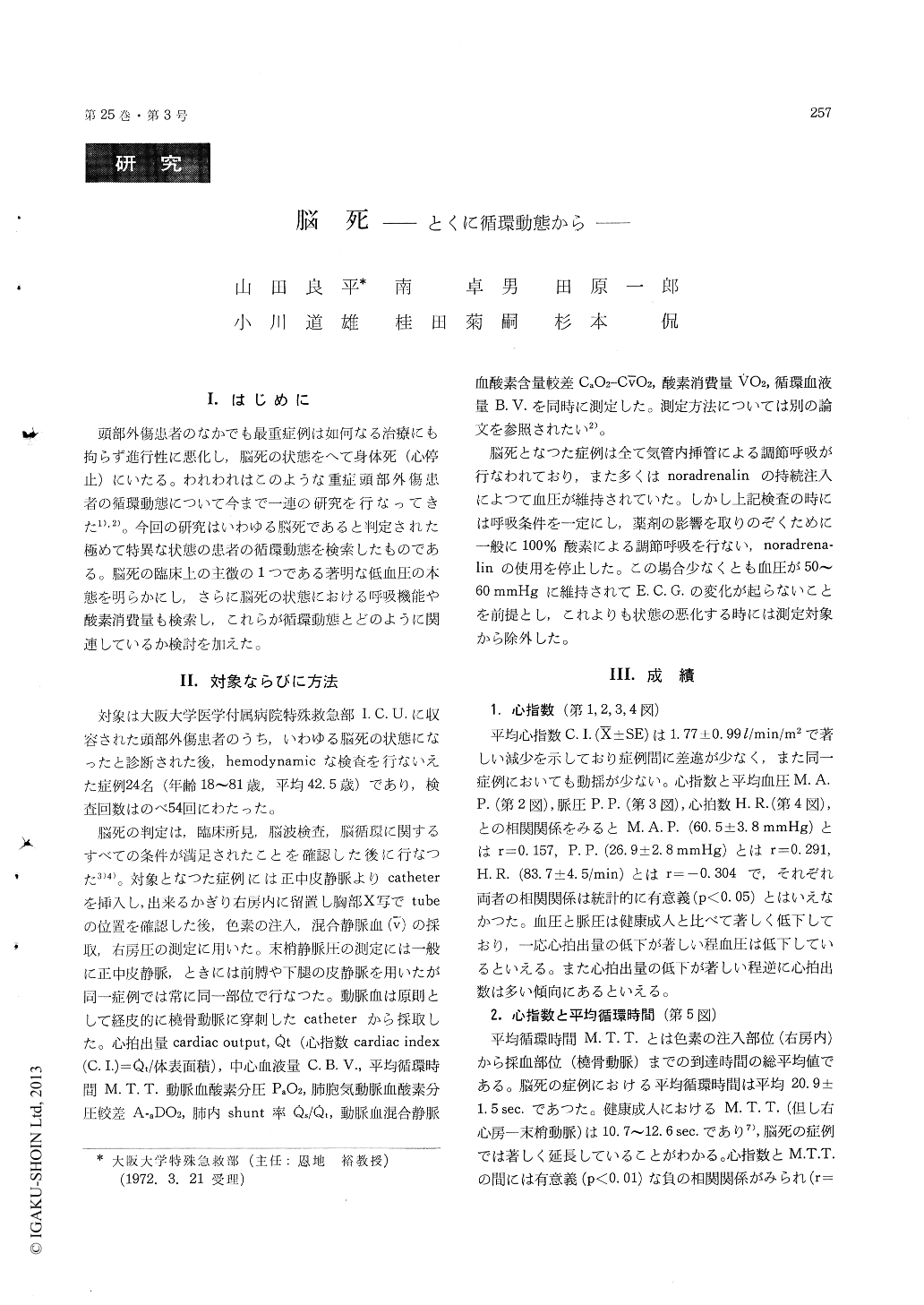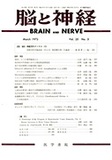Japanese
English
- 有料閲覧
- Abstract 文献概要
- 1ページ目 Look Inside
I.はじめに
頭部外傷患者のなかでも最重症例は如何なる治療にも拘らず進行性に悪化し,脳死の状態をへて身体死(心停止)にいたる。われわれはこのような重症頭部外傷患者の循環動態について今まで一連の研究を行なってきた1),2)。今回の研究はいわゆる脳死であると判定された極めて特異な状態の患者の循環動態を検索したものである。脳死の臨床上の主徴の1つである著明な低血圧の本態を明らかにし,さらに脳死の状態における呼吸機能や酸素消費量も検索し,これらが循環動態とどのように関連しているか検討を加えた。
Hemodynamic changes in the patients with severe head injury were studied with special reference tothe state of so-called "brain death". Following results were obtained :
1) Significant decrease in the cardiac output was occurred at the moment of brain death concomitant-ly with the fall of blood pressure. Decrease of total peripheral resistance occurred simultaneously or there were short time lag to the decrease in cardiac output.
2) The prolonged mean transit time was asso-ciated with the reduction of the cardiac output in the brain death.
3) Noradrenalin was the only effective agent to maintain the blood pressure of patients in the brain death. It improved the venous return curve, though only little effects on the ventricular function curve were observed.
4) Isoproterenol had little effects on the ven-tricular function curve. No raise in the blood pres-sure nor change in venous return curve, were observed after the injection of isoproterenol.
5) There was no compensatory reaction in cardiac output to the respiratory dysfunction in brain death state.
Thus, both the cardiac function and peripheral circulatory state were deteriorated in the brain death. Normal reaction in the hemodynamic state could not occur.
We could conclude that the state of brain death is not only the dysfunction of brain, but also the deterioration of the hemodynamic reaction. The blood pressure is maintained by the drip of large doses of noradrenalin and the heart continued to beat by its automaticity, but whole vital reactions are disappeared at the state of brain death.

Copyright © 1973, Igaku-Shoin Ltd. All rights reserved.


